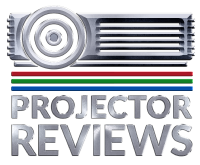Bottom Line
The Canon LE-5W is a well made, highly portable projector that is well suited for the business traveler. It is small enough, when inside the supplied slip case, to easily fit into a moderately sized brief case with room left over for carrying an tablet computer and a few other business essentials. It offers a relatively straightforward initial setup and would be quick and easy to get up and running for an on-the-road presentation. Being able to handle Microsoft office files, Acrobat (pdf) files, photos, videos, and audio files directly from a USB memory drive or a SD card (i.e., without the use of an separate laptop PC or tablet) is a plus for the business ‘road warrior’ wanting to travel light when making business presentations.
Like just about any projector, especially inexpensive ones, this projector has some good capabilities as well as certain functional and performance areas where the results fall short of ideal. Such limitations perhaps result from constraints imposed from the need to meet a specific price point. Compared to the really tiny pico projectors, the LE-5W offers a very respectable 500 lumens of maximum light output. This should be adequate light output for business presentations on a moderate size screens (e.g., 80 inches) in a conference room with subdued lighting.
I did most of my testing using the projector’s HDMI input as this is the most convenient connection method to convey both video and audio between a modern laptop PC or tablet and this projector. The projector’s built-in speakers provide adequate audio volume for use with multimedia presentations in a typical conference room environment.
In using the LE-5W I found myself wishing Canon had offered the user the ability to adjust such controls as brightness, contrast and color in all of the preset Image Modes. As it stands these adjustments are only available in the ‘User’ image mode and this projector only has a single User Mode preset. I did find it possible to get a projected image with reasonably good colors by using the ‘User’ image mode with the Color Temperature set to ‘Low’ and adjusting the brightest and contrast controls. I was able to get 385 lumens of light output from the projector with my custom settings in ‘User’ image mode and the projected video had reasonably accurate, but moderately oversaturated colors. I would say the performance in this area is average for this class of projector.
The LE-5W projects an image that has a fairly high black level (blacks appear grey rather than black) and the contrast ratio, when using the default factory presets, came up short of the rated 3,000:1 on/off contrast ratio. I found performance of the LE-5W’s lens to be average, at best, for this class of projector. The lens had a moderate level of chromatic aberration that resulted in some visible color fringing that was most noticeable along high contrast edges (such as white text on a black background) within the projected image. Even with this less than ideal optical performance, I found that projected text, such as would be typical with a business presentation, remained acceptable even with relatively small font sizes.
Similar priced “full size” business projectors will almost always outperform small, portable (including pico) business class models and that is the case here. While, the Canon LE-5W offers only average performance for this class of portable business projector, it appears to be well built and offers the essential functions, along with a few extras, that are useful for business presentations.

